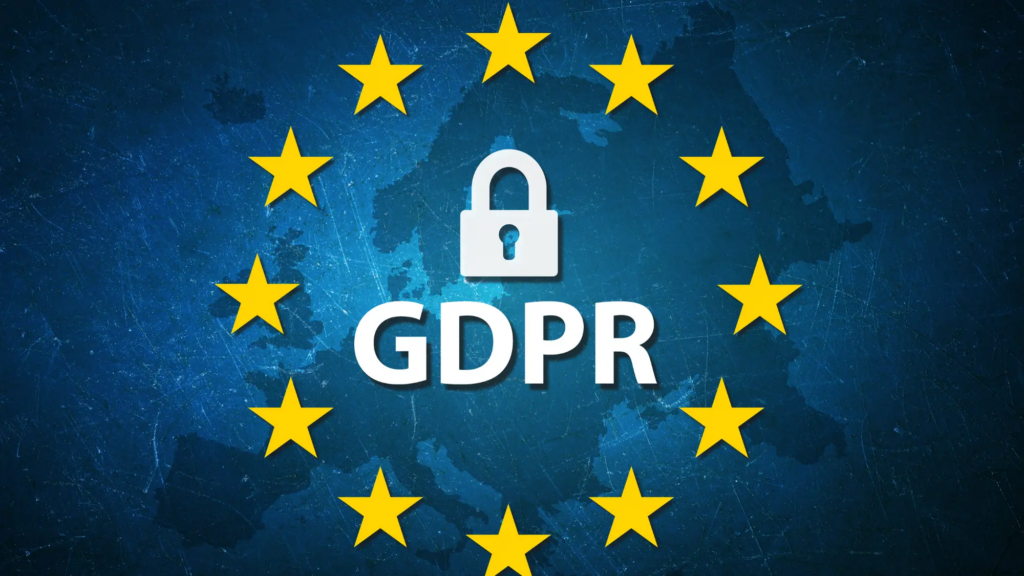
Adherence to the General Data Protection Regulation (GDPR) is essential for every business security continuity in today’s digital world. GDPR serves as a set of laws and regulations protecting the personal data of individuals within the European Union (EU).
In the realm of data protection and compliance, GDPR data inventory is crucial to ensure compliance with regulations and protect the rights of data subjects.
In this guideline, we aim to explore the power of GDPR data inventory processes in providing adequate data privacy and compliance adjustments.
Key Takeaways
GDPR data inventory is essential for your corporate compliance with data protection regulations and ensuring the privacy of data subjects.
GDPR data inventory includes critical components such as identifying personal data and mapping data processing activities.
GDPR data inventory best practices involve data classification, flow diagrams, and precise data retention and deletion policies.
Understanding GDPR Data Inventory
GDPR Data Inventory Ensuring Data Protection and Compliance (1).png

GDPR data inventory is the process of identifying and documenting the individual personal data that your organization collects, processes, and stores.
With a comprehensive data inventory of all data assets, the inventory ensures compliance with GDPR and protects individual rights. GDPR data inventory is significant in providing transparency, defining an accountability framework, and controlling data subjects.
Role of GDPR Data Inventory in Compliance
The GDPR data inventory can help look at how the data inventory organizes and manages your data more effectively and maintains compliance.
Ensuring data protection and privacy for EU citizens
Through GDPR data inventory, your organization can better understand the personal data you collect and process from EU citizens.
Through the data inventory process, you can implement appropriate security measures to protect this individual data, minimizing the risk of data breaches or unauthorized access.
Facilitating data subject requests (DSRs) and reporting
You can handle data subject requests through a comprehensive inventory, such as accessing personal data, revising inaccuracy, or erasing data. Also, you can use data inventory to generate up-to-date data and facilitate regulatory reporting.
Key Components of GDPR Data Inventory
GDPR Data Inventory Ensuring Data Protection and Compliance (2).png

Data inventories are resourceful data assets for managing and organizing data. Due to their processing data quality, data inventories can prevent your organization’s misconduct derived from unorganized personal data and disjointed data processing.
Identifying personal data
Every organization collects different types of personal data depending on the kind of services they provide and the policies they follow. You must be clear about the types of personal data you aim to collect and process. This identification can help you to consider any personal data that matters in the inventory process.
Mapping data processing activities
Data mapping will complete your accountability framework with an up-to-date track of personal data flows.
Your data mapping process emphasizes understanding personal data within your organization, including data sources, storage locations, transfers, and data recipients. You can also better look at potential risks and implement appropriate security measures through these data processing activities.
GDPR Data Inventory: Secret to Compliance
A data inventory is a roadmap to see the faults with your compliance requirements as a part of your data compliance solutions. It would help to have data inventory about your current corporate compliance status, available compliance requirements, and upcoming regulations and laws. Stay informed of any forthcoming changes or revisions to privacy and protection laws.
Data Subject Rights
Data protection officers are always on the front line when you need to strive for GDPR compliance requirements. Aside from conducting regular assessments to ensure GDPR compliance, the officer is also responsible for training the staff to check individual data privacy and data subject rights.
Enabling data subjects to exercise their rights
GDPR data inventory allows your organization to locate and access personal data in response to data subject requests. This way, the data subjects will exercise their rights regarding their data by accessing, correcting, or deleting their information.
Handling data subject requests (DSRs) efficiently
Handling DSRs can be challenging financially and systematically. However, a comprehensive data inventory can help your organization streamline the process of managing data subject requests. The data inventory allows you to identify the location and scope of the requested data and ensure timely and accurate responses.
Data Protection Impact Assessments (DPIAs)
A DPIA is an analytic process to identify and mitigate data protection risks. To handle these risks, data protection officers conduct DPIAs to outsource compliance, minimizing data protection risks. For your DPIA, you can also contact us at Captain Compliance to determine the purposes and methods of your data processing.
The process of conducting DPIA includes the following:
Identifying the need for DPIA: DPIA will help you process description, consult consideration, determine necessity and proportionality, and conduct assessments.
Identifying measures: You can easily record outcomes, integrate them into your project plan, and review maintenance.
Assessing and mitigating data protection risks
GDPR enables your organization to conduct DPIAs for high-risk processing activities. On the other hand, data inventory covers DPIA for collecting the necessary information and assessing potential risks to individual rights.
Documenting DPIAs for regulatory compliance
By minimizing the potential risks threatening individual privacy, DPIAs ensure your organization’s commitment to compliance with GDPR. Your organization must conduct risk assessments to identify risks with any third party accessing their data. Data inventory can guarantee that all DPIAs are accurately documented and aligned with regulatory audits and reviews.
Regulatory Reporting
Data inventory invents a way to handle the potential risks associated with data flow through its continuous reporting. Data inventory can help minimize possible breach penetration and ensure corporate compliance adherence.
Generating compliance reports and documentation
Data inventory can be a helpful means to improve the quality of your compliance resorts through:
Simplifying generating reports: A comprehensive data inventory streamlines the creation of compliance reports and documentation.
Improving information accuracy: It provides accurate information about your organization’s data processing activities and compliance with GDPR requirements.
Demonstrating GDPR compliance with regulatory authorities
If authorities request proof of GDPR compliance, your up-to-date and well-organized data inventory can facilitate the GDPR demonstration, helping your organization avoid penalties, fines, and legal consequences.
GDPR Data Inventory Best Practices
You may have data inventory in your compliance framework. However, you must know how to use it to its full potential to benefit from its advantages and avoid regulatory confusion or struggle. To reach this efficiency, ensure you put your data inventory in expert hands with the information you aim to collect. From data classification and flow diagrams to data retention, you can have accurately up-to-date information you can refer to whenever you need it for your accountability and regulatory authority.
Data Classification and labeling
Data inventory plays an interface to track classified data. Based on your custom classification scheme, you can benefit from the resulting analysis to drive your strategic security decisions, unify repositories, and justify your future security investments.
Implementing data tagging and classification
To make personal data more organized and easier for any staff member to use, we at Captain Compliance always organize data assets through easy-access data lists as part of our data protection compliance services. The process of labeling and categorization mainly focuses on two aspects:
Classification of personal data: You can group and label personal data based on its sensitivity, risk priority, purpose of processing, and legal basis.
Management of adequate sensitive data: with comprehensive data management, you can enhance individual data protection and ensure compliance with GDPR.
Ensuring consistency in data identification
For data inventor best practices, consider consistency in data identification. With effective data inventory management, you will establish clear guidelines and standards for identifying and labeling personal data. This consistent classification can help to maintain a valid and precise data inventory record.
Data Flow Diagrams
The data flow diagram (DFD) is part of your inventory management system to visualize the processes between data sources and destinations and sequence data processes within your software system.
Creating visual representations of data flows
DFD can add to the accuracy of your data processing through its visualization quality. You can benefit from this demonstration in two ways:
Clear visualization: a DFD can show you a clear and visual path to the data flows within your organization.
Improved identification: With data inventory and mapping, you have a better vision for identifying personal data entry and exit points, data flows, and potential risks.
Identifying data entry and exit points
Identifying data entry and existing DFD will allow you to identify potential vulnerabilities in your data processing activities and implement necessary controls to protect personal data.
Data Retention and Deletion Policies
Data retention policies refer to all rules and regulations that concern the kind, duration, and location of data you store or archive. Your data retention and deletion policies must align with GDPR requirements. This way, it specifies how long you are supposed to hold data subject information and defines what procedures you will use to dispose of data upon expiration.
Develop clear policies for data retention and disposal
Retention and preservation policies can directly affect the data you must delete and those you must hold within your data inventory. Your corporate policies, regulatory and contractual obligations, and data’s purpose, value, sensitivity, and relevance are the primary keys to defining your specified data retention and deletion policies.
These policies can help you in two ways:
Saving costs: You can maintain compliance with GDPR principles while avoiding regulatory issues and rescue costs of regulatory fines and penalties.
Generating values: Through these policies, you can reduce inefficiencies, eliminate redundant and unnecessary data, and develop more control over your data sources.
Automating data deletion processes when required
Automation and scheduling of the data disposal process to maintain your data subject privacy. You must operate data deletion tasks safely to avoid data breaches that can cause compliance issues.
Any organization must follow a data disposition policy to prevent any potential risk. Throughout all these stages, you can use a data inventory template to have a recorded track of the data your organization maintains or deletes.
Data Inventory Processes and Workflows
GDPR Data Inventory Ensuring Data Protection and Compliance (3).png

You can move data within your organization system from one step to another using forms and documents. Your workflow can include information about names, ID numbers, existing suppliers, and approved vendors.
Additionally, you can define your data inventory process by the data mapping process activities that GDPR specifies. Both these sources can help manage and safeguard data subject rights.
Data Inventory Strategy
There are some strategies you must consider when using the data inventory through these stages to establish a robust authority, specify your data inventory scope, classify your data assets, finalize Quality checks, and categorize your data initiatives.
Setting clear GDPR compliance objectives
By establishing clear compliance objectives, you can classify your data inventory efforts. This way, your data inventory processes will align with GDPR requirements and your organizational goals.
Aligning data inventory with regulatory requirements
You must ensure that your data inventory processes align with GDPR principles, keeping you updated with evolving regulations. This ongoing monitoring can guarantee compliance and minimize the potential risks to your data privacy.
Data Inventory Execution
To execute a data inventory, you’ll better understand your current data context, the purpose of your data inventory, and its status in organizing your data inventory project. You must also determine your organization’s data inventory stakeholders and state your organization’s values to engage your data inventory team better.
Collaborative efforts across departments
To put data inventories in best practice, you must have a vibe of collaboration among different departments within your organization. For example, you need a cross-functional network between IT, legal, compliance, and other relevant teams, ensuring a comprehensive data inventory exchange.
This cross-functional benefits your organization by:
Reducing Costs: by adjusting data inventory to meet customer demand, you can reduce carrying costs and minimize waste.
Improving Customer Satisfaction: When you forecast inventory levels, your business can build customer loyalty and revenue.
Increasing Efficiency: You can increase the efficiency of your data inventory by simplifying processes, improving data sharing, developing productivity, and increasing profitability.
Continuous monitoring and validation of data inventories
Since the risk associated with your data assets is a constant threat, tracking data inventories is essential. This continuous monitoring will help you quickly identify changes and new data processing activities.
GDPR Data Inventory Governance
GDPR Data Inventory Ensuring Data Protection and Compliance (4).png

Data governance serves as a strategy to increase the integrity and transparency of your data management system. Data governance policy lets you know the location of the data, processes to store data and people to access it, and what actions you need to take. To establish a practical governance framework, consider your risk assessment, compliance, and data governance.
Data inventory audits and reviews
You can conduct regular audits and reviews to ensure an accurate, up-to-date, and compliant data inventory. Here are some advantages of the data inventory:
Defining your inventory control policy: Your inventory control policy is a set of rules and procedures. For this reason, it must be clear, consistent, and in line with your business objectives and standards. You should also hand a copy of your documented list to all relevant staff and stakeholders.
Conducting regular inventory audits: continuous review and audit can help identify any signs of discrepancies. It is ideal to run your inventory audits at least once a quarter and check its operation.
Reviewing your inventory performance indicators: You can better check your data inventory management through metrics. Analyzing these indicators lets you pick trends or issues that need improvement.
Challenges and Pitfalls
Managing a data inventory control system can be challenging, affecting the performance and outcomes of your system.
Common GDPR Data Inventory Challenges
Beyond its benefits for data management, data inventory can come with some common challenges and pitfalls. These challenges, ranging from complex data ecosystems to regulatory issues, can make your organization vulnerable to risk and cause profitability loss and operational inefficiency.
Complexity of data ecosystems
Due to a complex network of data, sometimes it takes time to identify and document all personal data accurately. Through cross-functional collaboration and automation, you can fully manage the data asset to its full potential. To simplify the data ecosystem, you must create a vital infrastructure covering data sources, storage, processing, integration, analytics, visualization, and governance. To make it more effective, new technologies, like Artificial intelligence (AI) and Graph Technology, can work in your favor for their invaluable efficiency in your long-term organization data ecosystem.
Evolving GDPR
Part of the challenge with your data inventory is the constantly evolving nature of GDPR, leading to changes in your data inventory status. The only solution is to stay informed of the latest regulation changes and adjust your data inventory framework accordingly.
Pitfalls to Avoid
Inventory management is crucial for you if you want to optimize your supply chain, reduce costs, and satisfy your customer demand. However, many common inventory management mistakes can undermine these goals and cause various problems.
Overlooking overstocking or understocking: Excessive stocking and understocking can cause reputational and financial damage. To make your path, you must continuously monitor your inventory turnover, looking for any imbalance in your inventory levels, safety stocks, and reorder points.
Skipping collaboration for separation: Data inventory is anyone’s business in any organization. That is why it shouldn’t be limited to the IT team, but to all relevant departments to give a whole picture of every move in your organization. Through continuous meetings, sharing ideas, and reports on data inventory, you can look deeper at a handy data map.
Negligence on inventory accuracy: Your data inventory inaccuracy can make you vulnerable to planning, organizing, and managing data, leading to financial reputational damage. Put your regular audit on your schedule and use inventory management software.
Disregard inventory classification: Weigh up your data inventory values, demands, and usages to save time and money. You can also use classification methods, prioritize your data inventory based on their importance, adapt your inventory policies to changes, and manage your data inventory category.
Inadequate data inventory documentation
Work on complete or consistent documentation of your data inventories to avoid any compliance violation or financial, reputational, and legal consequences. Adequate documentation can also bring thorough and accurate documentation through your data inventory process.
Insufficient resources for ongoing compliance efforts
You must have personnel, technology, and training under your sleeve for regular compliance reviews and audits. To make your data inventory more effective, equip it with sufficient resources to improve data inventory processes and GDPR compliance adherence.
GDPR Data Inventory and Emerging Technologies
Through emerging technologies like AI, machine learning, and blockchain, data inventories have positive ways for data protection. An automated analysis makes decision-making much more efficient, protecting your data privacy and equipping you with a preventive risk-based approach.
Artificial Intelligence (AI) and Machine Learning (ML)
Nourished by the GDPR information provided, you can have highly automated privacy-conscious data. You can improve data management efficiency and reduce costs through AI and ML. By leveraging advanced algorithms and data-driven decision-making, you will have a better picture to forecast demand, optimize data inventory and supply chain, and replenish your stock.
Leveraging AI for Automated Data Inventory
AI technologies can be a helpful tool to assist with data management and mapping, add a layer of automation, and improve your organization’s efficiency, security, and cost. Leveraging these technologies can benefit your organization in the following areas:
Speeding up the inventory process: You can speed up the data inventory process, reduce manual errors, gain valuable insights, simplify replenishment processes, and mitigate stockouts and overstocks.
Automation in real-time: You can analyze large amounts of historical data, automate decision-making processes and routine tasks, optimize efficiency, reduce relevant costs, and optimize inventory levels in real time.
Risk reduction of stocking: By automatically identifying patterns and forecasting demands, you can improve inventory accuracy and mitigate the risk of excessive stocking or understocking.
Improvement of forecasting capability: Your organization can reduce forecasting errors and align with your inventory levels, improving data operational efficiency and costs.
Enhancing DSR handling with AI
AI-powered solutions can efficiently empower your organization to handle data subject requests using natural language processing capabilities. These new automated languages can work as online operators to generate automatic, timely, and accurate responses to your DSRs.
Blockchain and Distributed Ledger Technology (DLT)
DLT and blockchain are similar in some ways by making the transaction process more efficient. DLT is a digital system for recording data asset transactions and their details in multiple places rather than one central data store or administration. On the other hand, blockchain is a type of DLT and the parent technology of DLT. On the other hand, they work toward the best data inventory management and enhancing reputation.
Ensuring data immutability and transparency
Blockchain and DL technology can work for your data security, enhancing immutability and transparency. These technologies bring integrated and traceable personal data management and strengthen GDPR compliance.
GDPR compliance in blockchain-based systems
You must consider GDPR requirements when designing your blockchain-based systems and create a balance between blockchain technology and data protection principles. You can also modify and erase data to comply with legal requirements according to the GDPR. On the other hand, blockchain purposely renders data modifications to ensure your data integrity and trust networks.
Closing
GDPR data inventory is your cornerstone in managing personal data and protecting your organization against potential risks, ensuring compliance with data protection regulations. By implementing best practices, understanding the challenges, and leveraging emerging technologies, your organization can enhance its data inventory management and achieve GDPR compliance.
For our data protection compliance services, we at Captain Compliance can help you navigate the complexities of data protection compliance and provide tailored solutions to your organization’s needs.
As part of our compliance service, Captain Compliance can minimize the risk of data breaches and regulatory penalties and focus on your core operations confidently. We at Captain Compliance provide you with the highest level of compliance service and expertise to help meet your data compliance solutions.
FAQs
What is a data inventory GDPR?
A data inventory GDPR refers to identifying and documenting the personal data that your organization collects, processes, and stores, ensuring compliance with GDPR and protecting data subject rights.
Learn more about GDPR key principles here
What is included in a data inventory?
Data inventory includes a comprehensive record of your organization’s collected, processed, and stored data. It involves the types of personal data, data sources, categories of data subjects, data processing activities, and data sharing practices.
Discover about compliance best practices here
What are the requirements for data inventory?
The requirements for a data inventory include:
Identifying and documenting all personal data collected and processed.
Mapping data flows.
Establishing data retention and deletion policies.
Ensuring data security and privacy.
Maintaining accurate and precise records.
Learn more about our GDPR compliance requirements here.
How should GDPR data be stored?
Technical and organizational measures can store GDPR data securely. This storage can protect your system from unauthorized access, loss, or change. GDPR holds data through encryption, access controls, regular backups, and secure storage systems.
Explore data protection compliance services for your organization here